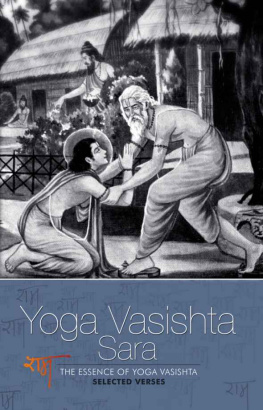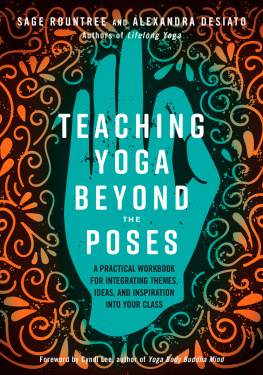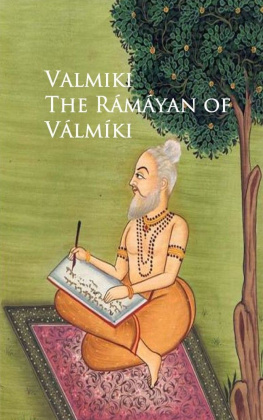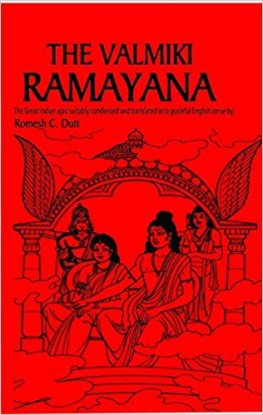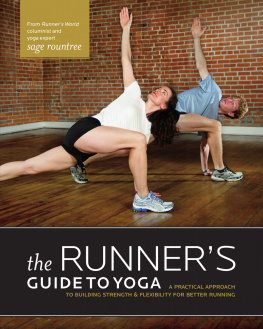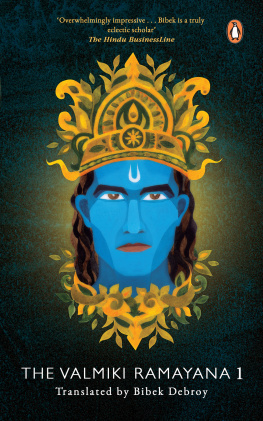Sage Valmiki - Yoga Vasishta Sara
Here you can read online Sage Valmiki - Yoga Vasishta Sara full text of the book (entire story) in english for free. Download pdf and epub, get meaning, cover and reviews about this ebook. year: 2009, publisher: Sri Ramanasramam, genre: Religion. Description of the work, (preface) as well as reviews are available. Best literature library LitArk.com created for fans of good reading and offers a wide selection of genres:
Romance novel
Science fiction
Adventure
Detective
Science
History
Home and family
Prose
Art
Politics
Computer
Non-fiction
Religion
Business
Children
Humor
Choose a favorite category and find really read worthwhile books. Enjoy immersion in the world of imagination, feel the emotions of the characters or learn something new for yourself, make an fascinating discovery.
- Book:Yoga Vasishta Sara
- Author:
- Publisher:Sri Ramanasramam
- Genre:
- Year:2009
- Rating:5 / 5
- Favourites:Add to favourites
- Your mark:
- 100
- 1
- 2
- 3
- 4
- 5
Yoga Vasishta Sara: summary, description and annotation
We offer to read an annotation, description, summary or preface (depends on what the author of the book "Yoga Vasishta Sara" wrote himself). If you haven't found the necessary information about the book — write in the comments, we will try to find it.
Yoga Vasishta Sara — read online for free the complete book (whole text) full work
Below is the text of the book, divided by pages. System saving the place of the last page read, allows you to conveniently read the book "Yoga Vasishta Sara" online for free, without having to search again every time where you left off. Put a bookmark, and you can go to the page where you finished reading at any time.
Font size:
Interval:
Bookmark:
YOGA VASISHTA SARA
(THE ESSENCE OF YOGA VASISHTA)
An English Translation from the Sanskrit Original

Sri Ramanasramam
Tiruvannamalai 606 603
2005
Sri Ramanasramam
Tiruvannamalai
First Edition : 1973 1000 copies
Second Edition : 1985 1000 copies
Third Edition : 1994 1000 copies
Fourth Edition : 2005 1000 copies
CC No. 1084
ISBN: 81-88018-45-7
Price: Rs.
Published by
V.S. Ramanan
President
Sri Ramanasramam
Tiruvannamalai 606 603
Tamil Nadu
INDIA
Email:
Website: www.ramana-maharshi.org
Typeset at
Sri Ramanasramam
Printed by
Sudarsan Graphics
Chennai
PREFACE
This English version of the Yoga Vasishta Sara is based on a translation made by Swami Sureshananda, an old devotee of Bhagavan, who has founded an ashram named Vijnana Ramaneeyam at Palghat and has translated several works of Bhagavan as well as the Yoga Vasishta Sara into Malayalam. This was published serially in The Mountain Path , the journal published by Sri Ramanasramam, during 1969 to 1971 and is now issued in the form of a book for facility of reference.
V.S. R AMANAN
P RESIDENT
S RI R AMANASRAMAM
15th July, 1973
Guru-Poornima.
INTRODUCTION
The Brihat (the great) Yoga Vasishta or Yoga Vasishta Maha Ramayana as it is also called, is a work of about 32,000 Sanskrit couplets, traditionally attributed to Valmiki, the author of Srimad Ramayana. It is a dialogue between Sage Vasishta and Sri Rama, during which Advaita (the doctrine of non-duality) in its pure form of ajatavada (theory of non- origination) is expounded, with illustrative stories in between. This vast work was abridged some centuries ago by Abhinanda Pandita, a Kashmiri scholar, into 6,000 couplets, which go by the name of Laghu Yoga Vasishta . This is a masterpiece in itself, like the original Brihat.
Bhagavan Sri Ramana Maharshi used to refer to Yoga Vasishta frequently and has even incorporated six couplets from it in His Supplement to Forty Verses (verses 21 to 27).
A further condensation of this work was made long ago, by an unknown author, into about 230 couplets, divided into ten chapters, as Yoga Vasishta Sara (Essence of Yoga Vasishta ), of which this translation is presented for the first time. By making this condensation the author has rendered a great service to all sadhaks. This is indeed a goldmine fit for repeated reading and meditation.
PUBLISHER
CONTENTS
YOGA VASISHTA SARA
CHAPTER ONE
DISPASSION
1. Salutations to that calm effulgence which is endless and unlimited by space, time etc., the pure consciousness which can be known by experience only.
2. Neither one who is totally ignorant nor one who knows it ( i.e. Truth) is eligible to study this book. Only he who thinks I am bound; I must become free is entitled to study it.
3. Until one is definitely blessed by the Supreme Lord he will not find either a proper Guru or the right scripture.
4. Just as a steady boat, O Rama, is obtained from a boatman, so also the method of crossing the ocean of samsara is learnt by associating with great souls.
5. The great remedy for the long-lasting disease of samsara is the enquiry, Who am I?, to whom does this samsara belong?, which entirely cures it.
6. Not a day should be spent in a place which does not possess the tree of a wise knower of Truth with its good fruit and cool shade.
7. The sages are to be approached even if they do not teach. Even their talks in a light vein contain wisdom.
8. The company of sages converts emptiness into fullness, death into immortality and adversity into prosperity.
9. If sages were concerned solely with their own happiness with whom could those tormented by the sorrows of samsara seek refuge?
10. That which is imparted, O good soul, to a worthy disciple who has become dispassionate, is the real wisdom; it is the real purport of the sacred texts and is also the comprehensive wisdom.
11. Following the customary method of teaching is only for preserving the tradition. Pure awareness results solely from the clarity of the disciples understanding.
12. The Lord cannot be seen with the help of the sacred texts or the Guru. The self is seen by the Self alone with the pure intellect.
13. All the arts acquired by men are lost by lack of practice, but this art of wisdom grows steadily once it rises.
14. Just as an ornament worn round the neck is considered lost through forgetfulness and is gained when the mistake is realized, so also the Self is attained (when the delusion is removed) by the words of the Guru.
15. He is indeed an unfortunate person who, not knowing his own Self, takes pleasure in sense-objects, like one who realizes too late that the food eaten by him was poisonous.
16. That perverted man who, even after knowing that worldly objects are deceptive, still thinks of them, is an ass not a man.
17. Even the slightest thought immerses a man in sorrow; when devoid of all thoughts he enjoys imperishable bliss.
18. Just as we experience the delusion of hundreds of years in a dream lasting an hour, so also we experience the sport of maya in our waking state.
19. He is a happy man whose mind is inwardly cool and free from attachment and hatred and who looks upon this (world) like a mere spectator.
20. He who has understood well how to abandon all ideas of acceptance and rejection and who has realized the consciousness which is within the innermost heart his life is illustrious.
21. On the dissolution of the body, the ether (consciousness) limited by the heart ( hridayam ) alone ceases to exist. People lament needlessly that the Self is extinct.
22. When pots, etc. are broken the space within them becomes unlimited. So also when bodies cease to exist the Self remains eternal and unattached.
Nothing whatever is born or dies anywhere at any time. It is Brahman alone appearing illusorily in the form of the world.
24. The Self is more extensive than space; it is pure, subtle, undecaying and auspicious. As such how could it be born and how can it die?
25. All this is the tranquil, One without beginning, middle or end, which cannot be said to be existent or non-existent. Know this and be happy.
26. O Rama, it is indeed nobler to wander begging about the streets of the outcasts ( chandalas ), an earthen bowl in hand, than to live a life steeped in ignorance.
27. Neither disease nor poison nor adversity nor any other thing in the world causes more suffering to men than such stupidity engendered in their bodies.
CHAPTER TWO
UNREALITY OF THE WORLD
1. Just as the great ocean of milk became still when the Mandara Mountain (with which it was churned by the Devas and the Asuras) became still, even so the illusion of samsara comes to an end when the mind is stilled.
2. Samsara rises when the mind becomes active and ceases when it is still. Still the mind, therefore, by controlling the breath and the latent desires ( vasanas ).
3. This worthless ( lit. burnt out) samsara is born of ones imagination and vanishes in the absence of imagination. It is certain that it is absolutely unsubstantial.
4. The idea of a (live) snake in a picture of a snake ceases to be entertained when the truth is known. Similarly samsara ceases to exist (when the Truth is realized), even if it continues to appear.
5. This long-living ghost of a samsara which is the creation of the deluded mind of man and the cause of his sufferings disappears when one ponders over it.
6. O Rama, maya is such that it brings delight through its own destruction; its nature is inscrutable; it ceases to exist even while it is being observed.
Next pageFont size:
Interval:
Bookmark:
Similar books «Yoga Vasishta Sara»
Look at similar books to Yoga Vasishta Sara. We have selected literature similar in name and meaning in the hope of providing readers with more options to find new, interesting, not yet read works.
Discussion, reviews of the book Yoga Vasishta Sara and just readers' own opinions. Leave your comments, write what you think about the work, its meaning or the main characters. Specify what exactly you liked and what you didn't like, and why you think so.

